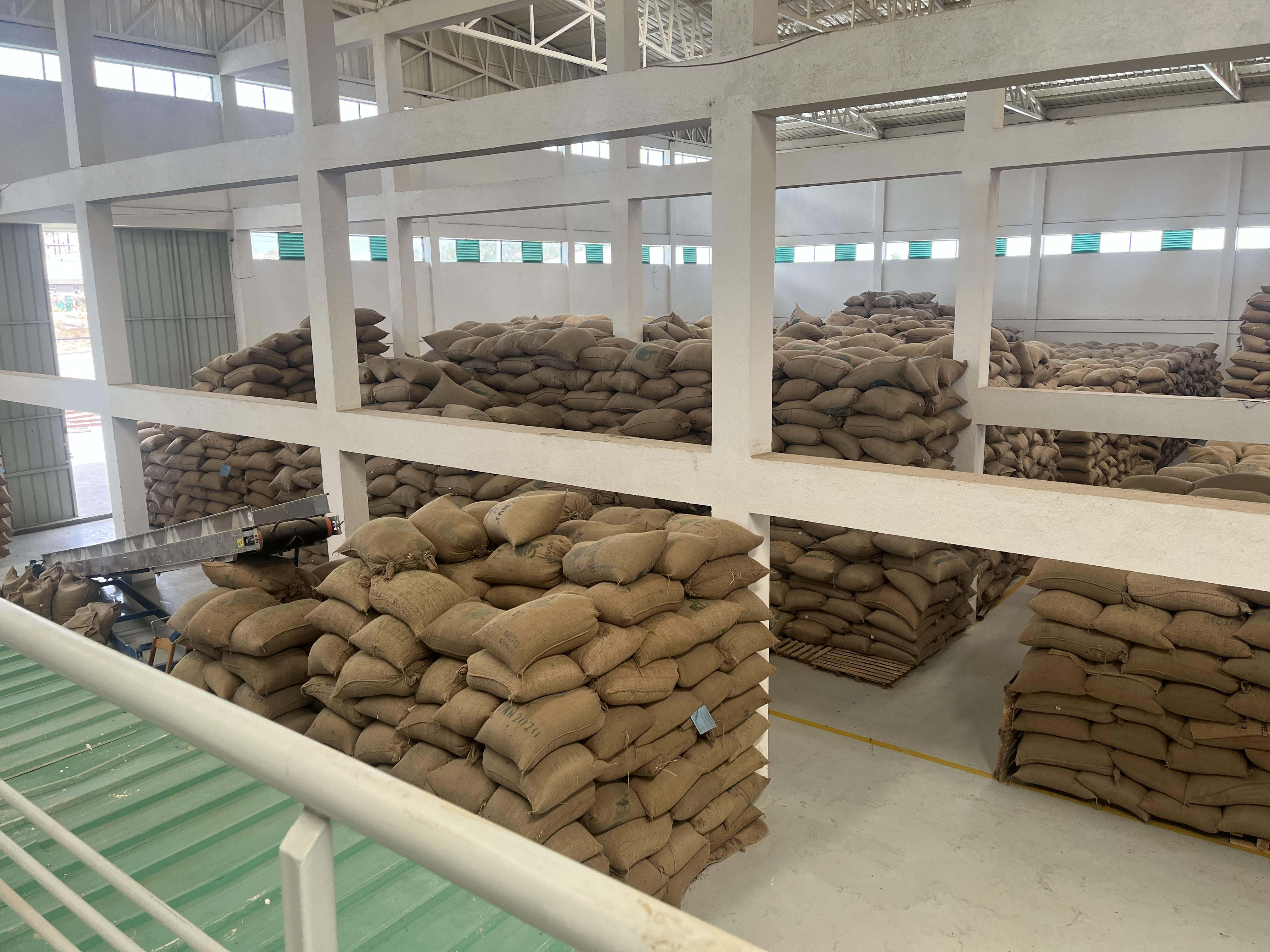The reality of the current coffee market is clear: green coffee prices are increasing across the board. We’ve already discussed how this impacts producers and our partners at origin, as well as how we, as specialty coffee importers, are preparing. Now, let’s shift the focus to you, the roasters, and how you can navigate these challenges.
While some contracts were secured at lower rates before prices surged, later purchases will inevitably reflect the higher market price. However, the impact won’t be immediate for roasters or consumers, there will be a lag effect.
Unlike producers and suppliers, who experience price shifts much faster, roasters and consumers typically feel the effects months later—often around six months after the initial price increase. If you’re buying a flat white today, you likely haven’t noticed any change. But when roasters start buying fresh lots, especially from origins tied closely to the C-market like Brazil, that’s when the real impact will hit. The most noticeable shift will be in commercial coffee, where supply shortages and pricing pressures are less flexible.
The good news is the lag effect gives roasters a brief window to plan ahead and strategise before the next round of purchases.
Market disruptions could create unexpected outcomes
The high C-price isn't just about cost increases—it also triggers market disruptions that can have unpredictable effects. Suppliers at origin, for example, may react by hoarding coffee, defaulting on contracts, or struggling with container shortages, all of which create sourcing challenges. While this is primarily an issue on the supplier side, there could be ripple effects that will inevitably affect roasters (so it’s important to be prepared).
One key consideration is that market mechanics don’t always align with physical supply. This means we could see surprising shifts: some origins will see dramatic increases, while others may remain stable or even become unexpectedly competitive. We could see Kenya for example, which has a liberalised market, becoming more present on coffee menus since it will be perceived as relatively more affordable compared to other origins. This is why understanding the nuances of each origin is crucial—pricing and availability will vary, and opportunities may arise in unexpected places.
Another factor to consider is the narrow buying windows for different origins. The timing of when coffee is being purchased will play a huge role in pricing and availability. For roasters, this means it’s essential to stay informed and flexible, adapting to shifting market conditions in real-time.

Let’s get more specific. How can you prepare for the year ahead?
Plan for the Long Term
With so much uncertainty, planning ahead is more important than ever. We say this all the time, but preparation will give you an advantage. While long-term contracts won’t necessarily secure lower prices, they can help maintain quality and supply stability. However, locking in contracts sooner rather than later can help reduce the risk of further price swings.
You should start thinking about your coffee needs not just for the next few months but for the entire upcoming year, no matter your volume requirements. If this is something that overwhelms you, we can help you get started.
Stay flexible and explore new options
- Don't be afraid to explore a wider range of options that could help balance cost and quality! While the current price surge is not solely driven by supply shortages, there could still be flexibility for negotiation in some markets. However, some origins or specific products you may have not considered before (e.g. different processing methods) may offer better value than before.
- Ask your sales rep about optimising your pricing strategies. For example, if you previously bought multiple small lots of Ethiopian coffee, consider consolidating into a single, larger purchase to take advantage of our volume discounts.
Adjust to tighter margins and pricing dilemmas
For roasters, the question is not if prices will need to increase but when and how to implement those changes within your business. Deciding on the best approach is something to think about:
- Should you raise prices gradually, softening the impact over time?
- Or should you make a single, upfront adjustment to avoid multiple price hikes?
- Either way, communicating these changes effectively to your own customers is essential.
Communicate pricing changes thoughtfully
One of the biggest challenges roasters will face is explaining price increases to wholesale and retail customers. Transparency is key—customers need to understand that this isn’t about greed or unnecessary markups. Coffee is an agricultural product subject to market volatility, and these price shifts are a direct response to broader economic and supply chain factors.
Educating customers about the realities of the market can help build trust and reduce resistance to price adjustments. This includes emphasising the role of sustainability and fair payment practices. Working with importers who prioritise transparency and consistently pay above-market rates ensures a more stable, ethical supply chain.
Additionally, roasters should be aware of the phenomenon of “price stickiness.” Many businesses are hesitant to increase prices, fearing customer backlash. However, delaying necessary price increases can be risky—if costs continue to rise, roasters may be forced to implement steeper hikes later, which could be even more challenging for customers to accept. Food for thought!
To conclude…
With commercial coffee prices rising sharply, some roasters might see this as a chance to introduce their higher-quality offerings to new markets and customers they haven’t reached before. Could this signal a broader shift toward specialty coffee?
The high C-price brings challenges, but it also offers opportunities for roasters who are proactive in their approach. By planning ahead, staying flexible, and maintaining open communication with customers, you can definitely navigate this period of uncertainty while continuing to offer high-quality coffee. The key is to remain adaptable and informed, ensuring that every decision—whether about sourcing, pricing, or communication—is made with both short-term realities and long-term sustainability in mind.





